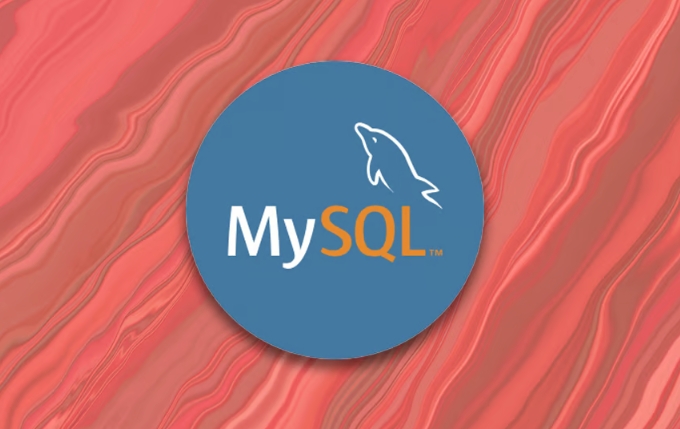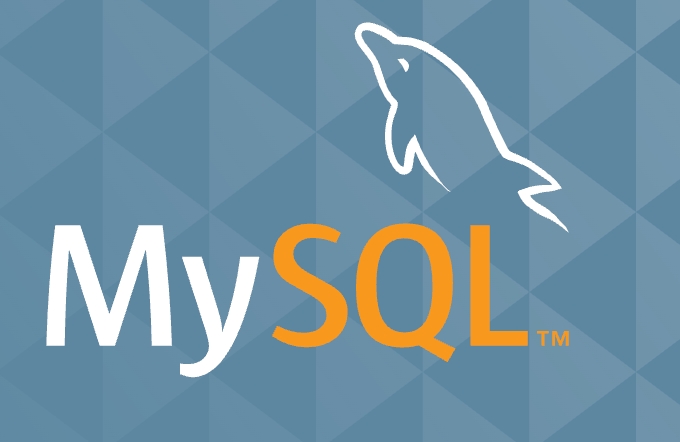Configuring MySQL Database Migration Service for Cloud Migrations
Jul 28, 2025 am 03:48 AMTo migrate a MySQL database to the cloud securely and efficiently, configure a Database Migration Service (DMS) properly by following these steps: 1. Choose the right DMS provider—like AWS DMS, Google Cloud Data Transfer, or Azure Database Migration—based on your cloud ecosystem and ensure it supports continuous replication, schema conversion, and SSL encryption. 2. Prepare source and target environments by checking MySQL version compatibility, setting up proper permissions and open ports on the source, and provisioning a target cloud MySQL instance with binary logging enabled if needed. 3. Configure the migration task by choosing between full load and CDC, mapping only necessary tables, defining error handling rules, and adjusting performance settings like memory and batch sizes. 4. Test and validate after the initial migration through checksums, row counts, index checks, and simulated application traffic, then monitor CDC sync before fully switching over and decommissioning the old instance.

Migrating a MySQL database to the cloud isn’t just about moving data—it’s about doing it securely, efficiently, and with minimal downtime. The right configuration of a Database Migration Service (DMS) can make all the difference.

1. Choose the Right DMS Provider
Not all migration services are built the same. AWS DMS, Google Cloud Data Transfer, and Azure Database Migration each have their own strengths. For MySQL specifically, you want a service that supports:
- Continuous replication
- Schema conversion (if needed)
- SSL encryption for secure transfer
If you're already in a specific cloud ecosystem, stick with that provider's DMS tool. It’ll integrate better with your existing infrastructure and IAM policies.

2. Prepare Your Source and Target Environments
Before you even start the migration process, make sure both ends are ready.
Source (on-prem or current host):

- Ensure MySQL version compatibility
- Open necessary ports (like 3306)
- Set up a dedicated user with proper permissions (
REPLICATION SLAVE,SELECT, etc.)
Target (cloud instance):
- Provision a new MySQL instance in your cloud provider
- Match or upgrade versions if needed
- Enable binary logging if you’re using ongoing replication
This setup helps avoid common hiccups like connection timeouts or access denied errors during migration.
3. Configure the Migration Task Properly
Once your environments are set up, it's time to create the actual migration task. This is where most people either under-configure or overcomplicate things.
Here’s what to focus on:
- Full load vs CDC (Change Data Capture): Start with full load to move existing data, then enable CDC to keep the target updated during the transition.
- Table mappings: Only migrate what you need. Exclude logs or temporary tables to speed things up.
- Error handling: Set rules for how the system should behave when it hits issues—skip, retry, or fail?
Also, monitor the task closely during the first run. You might need to tweak settings like memory allocation or batch sizes depending on the volume of data.
4. Test and Validate Before Going Live
Don’t assume everything worked perfectly. After the initial migration completes:
- Run checksums or row counts to compare source and target
- Check for missing indexes or failed constraints
- Simulate application traffic against the new DB to ensure performance holds up
If you’re using CDC, flip your app to read from the new DB and watch for any lag or sync issues. Once confident, cut over fully and decommission the old instance when safe.
That’s the core of setting up a MySQL DMS migration for the cloud. It’s not overly technical, but there are enough moving parts to trip up even experienced users. Get these pieces right, and your migration will go much smoother.
The above is the detailed content of Configuring MySQL Database Migration Service for Cloud Migrations. For more information, please follow other related articles on the PHP Chinese website!

Hot AI Tools

Undress AI Tool
Undress images for free

Undresser.AI Undress
AI-powered app for creating realistic nude photos

AI Clothes Remover
Online AI tool for removing clothes from photos.

Clothoff.io
AI clothes remover

Video Face Swap
Swap faces in any video effortlessly with our completely free AI face swap tool!

Hot Article

Hot Tools

Notepad++7.3.1
Easy-to-use and free code editor

SublimeText3 Chinese version
Chinese version, very easy to use

Zend Studio 13.0.1
Powerful PHP integrated development environment

Dreamweaver CS6
Visual web development tools

SublimeText3 Mac version
God-level code editing software (SublimeText3)

Hot Topics
 Establishing secure remote connections to a MySQL server
Jul 04, 2025 am 01:44 AM
Establishing secure remote connections to a MySQL server
Jul 04, 2025 am 01:44 AM
TosecurelyconnecttoaremoteMySQLserver,useSSHtunneling,configureMySQLforremoteaccess,setfirewallrules,andconsiderSSLencryption.First,establishanSSHtunnelwithssh-L3307:localhost:3306user@remote-server-Nandconnectviamysql-h127.0.0.1-P3307.Second,editMyS
 Performing logical backups using mysqldump in MySQL
Jul 06, 2025 am 02:55 AM
Performing logical backups using mysqldump in MySQL
Jul 06, 2025 am 02:55 AM
mysqldump is a common tool for performing logical backups of MySQL databases. It generates SQL files containing CREATE and INSERT statements to rebuild the database. 1. It does not back up the original file, but converts the database structure and content into portable SQL commands; 2. It is suitable for small databases or selective recovery, and is not suitable for fast recovery of TB-level data; 3. Common options include --single-transaction, --databases, --all-databases, --routines, etc.; 4. Use mysql command to import during recovery, and can turn off foreign key checks to improve speed; 5. It is recommended to test backup regularly, use compression, and automatic adjustment.
 Analyzing the MySQL Slow Query Log to Find Performance Bottlenecks
Jul 04, 2025 am 02:46 AM
Analyzing the MySQL Slow Query Log to Find Performance Bottlenecks
Jul 04, 2025 am 02:46 AM
Turn on MySQL slow query logs and analyze locationable performance issues. 1. Edit the configuration file or dynamically set slow_query_log and long_query_time; 2. The log contains key fields such as Query_time, Lock_time, Rows_examined to assist in judging efficiency bottlenecks; 3. Use mysqldumpslow or pt-query-digest tools to efficiently analyze logs; 4. Optimization suggestions include adding indexes, avoiding SELECT*, splitting complex queries, etc. For example, adding an index to user_id can significantly reduce the number of scanned rows and improve query efficiency.
 Handling NULL Values in MySQL Columns and Queries
Jul 05, 2025 am 02:46 AM
Handling NULL Values in MySQL Columns and Queries
Jul 05, 2025 am 02:46 AM
When handling NULL values ??in MySQL, please note: 1. When designing the table, the key fields are set to NOTNULL, and optional fields are allowed NULL; 2. ISNULL or ISNOTNULL must be used with = or !=; 3. IFNULL or COALESCE functions can be used to replace the display default values; 4. Be cautious when using NULL values ??directly when inserting or updating, and pay attention to the data source and ORM framework processing methods. NULL represents an unknown value and does not equal any value, including itself. Therefore, be careful when querying, counting, and connecting tables to avoid missing data or logical errors. Rational use of functions and constraints can effectively reduce interference caused by NULL.
 Understanding the role of foreign keys in MySQL data integrity
Jul 03, 2025 am 02:34 AM
Understanding the role of foreign keys in MySQL data integrity
Jul 03, 2025 am 02:34 AM
ForeignkeysinMySQLensuredataintegritybyenforcingrelationshipsbetweentables.Theypreventorphanedrecords,restrictinvaliddataentry,andcancascadechangesautomatically.BothtablesmustusetheInnoDBstorageengine,andforeignkeycolumnsmustmatchthedatatypeoftherefe
 Resetting the root password for MySQL server
Jul 03, 2025 am 02:32 AM
Resetting the root password for MySQL server
Jul 03, 2025 am 02:32 AM
To reset the root password of MySQL, please follow the following steps: 1. Stop the MySQL server, use sudosystemctlstopmysql or sudosystemctlstopmysqld; 2. Start MySQL in --skip-grant-tables mode, execute sudomysqld-skip-grant-tables&; 3. Log in to MySQL and execute the corresponding SQL command to modify the password according to the version, such as FLUSHPRIVILEGES;ALTERUSER'root'@'localhost'IDENTIFIEDBY'your_new
 Calculating Database and Table Sizes in MySQL
Jul 06, 2025 am 02:41 AM
Calculating Database and Table Sizes in MySQL
Jul 06, 2025 am 02:41 AM
To view the size of the MySQL database and table, you can query the information_schema directly or use the command line tool. 1. Check the entire database size: Execute the SQL statement SELECTtable_schemaAS'Database',SUM(data_length index_length)/1024/1024AS'Size(MB)'FROMinformation_schema.tablesGROUPBYtable_schema; you can get the total size of all databases, or add WHERE conditions to limit the specific database; 2. Check the single table size: use SELECTta
 Handling character sets and collations issues in MySQL
Jul 08, 2025 am 02:51 AM
Handling character sets and collations issues in MySQL
Jul 08, 2025 am 02:51 AM
Character set and sorting rules issues are common when cross-platform migration or multi-person development, resulting in garbled code or inconsistent query. There are three core solutions: First, check and unify the character set of database, table, and fields to utf8mb4, view through SHOWCREATEDATABASE/TABLE, and modify it with ALTER statement; second, specify the utf8mb4 character set when the client connects, and set it in connection parameters or execute SETNAMES; third, select the sorting rules reasonably, and recommend using utf8mb4_unicode_ci to ensure the accuracy of comparison and sorting, and specify or modify it through ALTER when building the library and table.






